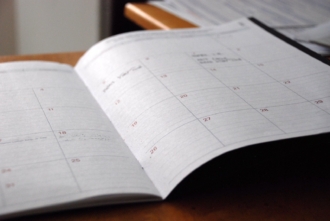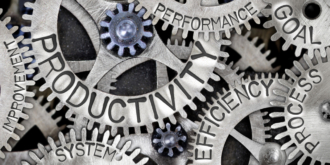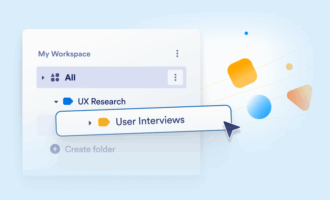If you want to be successful, many experts and life-hackers say you should:
- Wake up at 6 am
- Take a cold shower
- Exercise
- Meditate
- Journal and brainstorm
- Review and set goals
- Read news and industry sites
- Consume inspiring content
- Eat a protein-rich breakfast
Whew. That’s a lot to accomplish before 8 am.
I’m not sure when the dogma of morning routines began to spread, but suddenly, these mile-long checklists are everywhere — especially in the startup world.
Routines can be great, but I think there’s a misplaced emphasis on morning.
Everyone has different peak hours. If you want to enhance your productivity, it doesn’t matter whether you’re a morning person or a night owl, or if you go for a run at 6 am or 6 pm.
Instead, it’s up to you to make the most of your day, and to learn when you work and feel your best. Brian Tracy calls this your prime time:
“Your internal prime time is the time of day, according to your body clock, when you are the most alert and productive.”
Harnessing your prime time can supercharge your productivity. You’ll be more effective and avoid wasting precious time and energy.
I’ve spent 12 years growing Jotform from a small idea to a company with over 100 employees and 3.5 million users. Working with my natural rhythms (which I discovered through trial and error) has been the cornerstone of that growth.
Tackling the most important, most strategic work during my prime time enables me to stay motivated, make steady progress, and avoid feeling overwhelmed.
Most importantly, I still love what I do.
When I harness my peak hours, I’m excited to go to the office every day — and I want the same for you.
How to map your magic hours
Scientists have long studied the body’s natural cycles, or chronobiology.
You’ve probably heard of circadian rhythms, which affect our sleep and waking cycles, body temperature, and hormone levels.
In the average workday, however, we’re dealing with the peaks and valleys of ultradian rhythms, which run in 90–120-minute cycles. Ultradian rhythms explain why you can start a task feeling excited and alert, then two hours later, you’re checking Instagram and hunting for snacks.
Energy peaks and dips are normal (and unavoidable), so it’s important to map your own rhythms and work with them, instead of against them.
Author Yulia Yaganova suggests a three-week experiment where you rate your energy, focus and motivation at the end of every hour, using a scale from one to 10.
Filling in productivity spreadsheets and energy maps might sound tedious, but you’ll quickly see patterns.
You can throw out anomalies, like a sleepless night or a nasty cold, but you’ll soon know your cycles — and how to capitalize on your prime time.
Engage your body and your brain
A morning routine that works for a productivity guru won’t always work for you.
Take me as an example. Every morning, I eat a light breakfast and meet with my personal trainer. It doesn’t matter whether I’m feeling motivated or not; I show up and follow his orders.
About 20 minutes into the workout, I get a surge of energy. My blood is pumping and I’m working hard not to drop the kettle bell on my foot. I’m awake.
When my hour of benevolent torture is complete, I shower and drive to the office. I grab some coffee and get down to work.
Honestly, it’s one of my favorite moments of the day. I feel so fresh and alert. I’m happy to be in the office, and my creativity is at its peak.
This is my prime time, so here’s what I do next:
I open a blank document and start writing about a problem I want to tackle that day or something that’s on my mind. It often begins as an incoherent stream-of-consciousness, but after about five minutes, I start to develop new ideas. I find clarity in the chaos.
I write for as long as I can, then transform the document into a usable format. It could be an email draft, meeting notes, discussion points, slideshow or a presentation for our team. I work this way for about two hours — and it’s the most productive part of my day.
According to Stephen Covey, this kind of intentional writing is one way to sharpen the saw. Instead of struggling with dull tools, Covey says we should spend more time sharpening the saw. When it’s time to cut, you’ll finish the task with efficiency and precision.
My prime time happens to be in the morning, but yours might be at noon or 7 pm. And maybe you renew your energy with a coffee date or an afternoon yoga class.
Do whatever you can to seize that prime time and make the most of it.
Master your schedule
Entrepreneur and investor Paul Graham say most positions require one of two different working styles: the manger’s schedule and the maker’s schedule.
“The manager’s schedule is for bosses. It’s embodied in the traditional appointment book, with each day cut into one-hour intervals.
You can block off several hours for a single task if you need to, but by default you change what you’re doing every hour.”
Writers, programmers, designers, and other creatives need a maker’s schedule, which divides time into half-day units, at minimum.
As you’ve probably experienced, it’s tough to write or code or think in a one-hour block — especially if you have meetings on either side of that hour.
Overscheduling a maker can crush their entire day. It breaks time into unusable chunks and, as Graham explains, that kills productivity:
“If I know the afternoon is going to be broken up, I’m slightly less likely to start something ambitious in the morning.
I know this may sound oversensitive, but if you’re a maker, think of your own case.
Don’t your spirits rise at the thought of having an entire day free to work, with no appointments at all? Well, that means your spirits are correspondingly depressed when you don’t.”
I’ve given this a lot of thought. Founders, entrepreneurs and CEOs are both makers and managers. You need to meet and collaborate with employees, contractors or suppliers, and you need to think strategically.
If you’re a technology or content-based founder, you may also need time for hands-on work.
It comes down to the word “build.” When you’re “building a business” or “building a team,” you’re operating as a maker.
That’s why I split my day in two. During those early hours after the gym, I work like a maker. By later morning or after lunch, I’m back to having meetings and working like a manager.
Seize your downtime
I’m a huge proponent of rest. I wrote about its importance in “How to get more done with less work”.
I take the weekends off and I believe in regular, relaxing vacations. Once a year, I go back home to pick olives with my family. It’s amazing how this time away from the office re-energizes my body and spirit. My downtime is essential.
In 2016, productivity expert Scott Barry Kaufman did a study that revealed 72% of people get creative ideas in the shower. I’m definitely part of that group.
On Sundays, for example, I spend time with my wife and kids. We go to the playground, have lunch, or do something fun and active. By the time the kids are tucked into bed and I’m resting on the couch, new ideas inevitably pop into my head.
Relaxation promotes creative thinking, which is why we often have brain waves while soaping up or, in my case, after tackling the jungle gym with my son.
Letting your mind wander freely can inspire daydreams and non-linear thinking. It’s another kind of prime time.
And for anyone who’s wondering how to foster those shower-type brain waves at work, Kaufman says:
“You want to make sure that you make time and room for solitude. That can take a lot of forms, like taking a daily stroll to reconfigure your brain and get off the path that you have been working on the past hour or two.
It could involve a daydreaming room that locks out internal noise.”
While we’ve yet to build a daydreaming room at Jotform, we do believe in giving our employees paid time off. We put some healthy pressure on our staff to actually use their vacation days, too.
We also encourage people to work with their peak hours. Our flex time policy allows everyone to come in early or start later.
As long as they spend most of the day with their team, tackling projects and building momentum together, they can honor their own rhythms.
Protect your prime time
Your peak hours area a priceless currency. Draw clear boundaries and protect them however you can.
Use that time for your toughest, most creative, or most brain-intensive tasks.
Don’t book meetings or let people disrupt you.
Consistent habits can also safeguard your prime time. I’ve written before about my commitment to Inbox Zero, but I don’t tackle those emails until the end of the day.
My team knows I won’t respond to their messages immediately, but I will reply (fully and thoughtfully) within one business day.
Clear expectations give me more control over my time.
So, whether you’re laser-focused at 7 a.m. or hitting high gear as the sun sets, it’s worth taking the time to understand yourself better. Track your natural rhythms and make a plan that works for you.
After all, prime time is your secret weapon. Use it wisely and I suspect your productivity will soar.
Please let me know how you use your prime time. I’d love to hear more.
























































Send Comment:
13 Comments:
More than a year ago
Very nicely said.
The last 3 months has seen a spurt in these productivity gurus. Each one claiming 5am clubs or 6am clubs.. Was getting tired of all those nonsense.
This is a wonderful read. Sharing this.
More than a year ago
Amazing content with many new things to learn. Being motivated requires all these things.
More than a year ago
very nice inspirational quotes for depression-motivation456
More than a year ago
Good morning Aytekin -
As I write it's 9:30 AM and I'm still not awake. I'll get productive around noon and work until maybe 10 PM. Congratulations for stating your point - I used to be in tech but as you say, the inflexible schedule and many, many meetings just sort of soured me on it. Keep up the good work!
Regards,
Greg
More than a year ago
Finally, someone who recognizes that plugging yourself into the worlds artificially designed schedule wont work for everybody. Plugging your self into who you are just makes so much more “productivity” sense. If you can.
More than a year ago
Hi Aytekin. Just caught this on Medium and I am thrilled to read your take on this. I live and work in Singapore and for 36 years spoke & wrote about in personal and professional productivity with 16 books & audio books (McGraw Hill, Pearson Prentice Hall, Learn Inc). I just shared that we morning, afternoon or night people and morning people should focus their mornings on their A1 project (using Alan Leiken's ABC formula). Same for afternoon people. But I've been a night person and would go to a 24-hour restaurant at 10:30 pm, work until 4 am writing a newspaper column or book chapter, go home for 2 hours of sleep and start another day conducting seminars or going out selling my services. I HAD to be up early in the morning as people will not go to seminars at midnight! I really appreciated your specificity about peak hours and will include it in my teachings. I'm happy to quote you and mention your site in my work (with your permission). Paul Graham is new to me so thank you for that too. I'm writing a new productivity book series now and plan on launching in Q1 of 2019. Would you be willing to review at least one of the books and get credit on my Website or give it a short recommendation on the book itself?
More than a year ago
WOW. Thank you for this sober article and going against this zeitgeist that encourages working yourself 24/7. This is a SOLID article
More than a year ago
This was truly a great read! I loved everything you said in this. I have something called delayed sleep phase syndrome which can be very annoying when it comes to being in sync with “ normal” times that most people get things done, wake up, etc. , but I’m just as productive but at a different time. Reading this made me feel better about everything as a whole and like someone actually does understand that people do have different times of the day that they are going to function better, and it doesn’t always mean your lazy because you literally can’t “ do” mornings.
More than a year ago
How about taking the ending A off area?
"Protect your prime time
Your peak hours area a priceless currency."
More than a year ago
As I was reading this article, I discovered my prime time is about 10:45 AM, right after a short break. I was suddenly motivated to get everything on my task list done, and was excited about work. The things I do that feel good to me before 10:45 is personal development, introspection/reflection, and exercising. It's really unfortunate that me schedule does not accommodate that, but someday when I'm running my own business it will. For the record, I believe I have a second prime time around 1:30/2 PM for creative and building work. I usually get another at about 9:30 PM, right before I'm supposed to sleep. I have yet to explore how my productivity truly works, as I am not yet doing what I really want to do with life, but I'm getting there and I'm excited to pay more attention to my prime times.
Wonderful read, and thank you for all your articles!
More than a year ago
Anything that I have read for a long time made more sense than this! Congratulations and thanks for writting during your prime time.
More than a year ago
Hi from Brasil! My name is Giorgia.
For me is dificult, I know its possible, but my Prime Time starts at 21pm and go all night long.
If I was alone, it would be easier, but I am maried and society don't live like this...
Any Sugestions?
Sorry if my english is rusty.
Ah, by the way, I was taking a look ate the page "Pick all the topics you are interested in to fill your homepage
with stories you’ll love" and I was a lil bit frustated because I did not found anything related about filmaking/ videomaking, and I would relly apreciate it and I think a lot of people would.
Thank you very much. Great read,
Giorgia Piotti Hlebanja
+55 11 98060-6464
More than a year ago
Yes I agree with your point. For me my prime time is 2 to 3 hours from the moment I step into the work environment .After that it gradually reduces.Again after an evening tea break another 2 hours goes on actively. During the prime I check for the current day's activities and start with the high priority task.I plan for the next day's task during the previous day's evening itself and jot it down. Your sharing on how you utilize the prime time was quite useful. Thanks for the sharing.